Cults
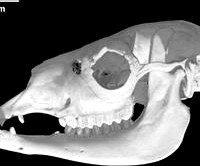
Lama glama, Llama skull
by Cults
Last crawled date: 6 years, 1 month ago
The llama (Lama glama) is a domesticated descendent of the guanaco (L. guanaco) (Nowak, 1991). Evidence for domestication dates back between 6000 and 7000 years ago and has been found from archaeological sites in the Andean mountains at elevations ranging from 4000 m to 4900 m (Wheeler, 1995). The species is currently distributed from Peru to northwest Argentina (Nowak, 1991).
The llama belongs to the group Camelidae, which includes all species of South American and Old World camelids. Altogether, there are three genera within camelidae, Lama and Vicugna in South America and Camelus in the Old World (Wheeler, 1995).
llama
Camelidae has several distinguishing characteristics. Camelids lack horns or antlers (Wheeler, 1995) and have a long, thin neck (Nowak, 1991). The stomach is divided into three sections and is ruminating. In the hindlimb, camelids have a highly reduced fibula. The foot bones are fused into a single bone known as a cannon bone and the feet are made up of only two digits (Nowak, 1991). Instead of having a hoof, camelids have a nail that covers the digits. Finally, individuals are able to rest on their stomach by bending their hindlimbs beneath their body (Wheeler, 1995).
This specimen (TMM M-2052; female) was made available to the University of Texas High-Resolution X-ray CT Facility for scanning by Dr. Timothy Rowe of the Department of Geological Sciences, The University of Texas at Austin. Funding for scanning was provided by a National Science Foundation Digital Libraries Initiative grant to Dr. Rowe.
The llama belongs to the group Camelidae, which includes all species of South American and Old World camelids. Altogether, there are three genera within camelidae, Lama and Vicugna in South America and Camelus in the Old World (Wheeler, 1995).
llama
Camelidae has several distinguishing characteristics. Camelids lack horns or antlers (Wheeler, 1995) and have a long, thin neck (Nowak, 1991). The stomach is divided into three sections and is ruminating. In the hindlimb, camelids have a highly reduced fibula. The foot bones are fused into a single bone known as a cannon bone and the feet are made up of only two digits (Nowak, 1991). Instead of having a hoof, camelids have a nail that covers the digits. Finally, individuals are able to rest on their stomach by bending their hindlimbs beneath their body (Wheeler, 1995).
This specimen (TMM M-2052; female) was made available to the University of Texas High-Resolution X-ray CT Facility for scanning by Dr. Timothy Rowe of the Department of Geological Sciences, The University of Texas at Austin. Funding for scanning was provided by a National Science Foundation Digital Libraries Initiative grant to Dr. Rowe.
Similar models
cults
free

Tomistoma schlegelii, False Gharial
...ded by a national science foundation digital libraries initiative grant to dr. timothy rowe of the university of texas at austin.
cults
free

Chamaeleo calyptratus, Veiled Chameleon
...ded by a national science foundation digital libraries initiative grant to dr. timothy rowe of the university of texas at austin.
3d_export
$49

Llama Lama Glama 3D Model
...ild mammal animal animals low poly lowpoly photoreal realistic textures nature
llama lama glama 3d model humster3d 84146 3dexport
3d_export
$40

Llama 3D Model
...a 3d model
3dexport
llama animal animals mammal mountain south america domestic wild lama
llama 3d model rmilushev 78705 3dexport
cults
free

Parahyaena brunnea, Brown Hyena skull
...and by a national science foundation digital libraries initiative grant to dr. timothy rowe of the university of texas at austin.
cults
free

Bradypus variegatus, Three-toed Sloth skull
...bradypus tend to be less active then the ecologically similar two-toed sloth. individuals rarely even cross over to a...
cults
free

Hyaena hyaena, Striped Hyena skull
...nd by a national science foundation digital libraries initiative grant to dr. timothy rowe of the university of texas at austin.
cults
free
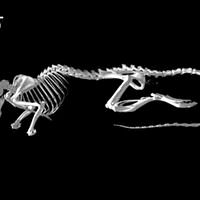
Mus musculus, House Mouse skull
... was provided by a national science foundation digital libraries initiative grant to dr. timothy rowe of the university of texas.
cults
free

Ursus maritimus, Polar Bear skull
...tin. the polar bear is one of several carnivorans included in ongoing research of respiratory turbinates by dr. van valkenburgh.
cults
free

Obdurodon dicksoniFossil, Fossil Platypus skull
...cility for scanning by dr. michael archer of the university of new south wales. funding for scanning was provided by dr. archer.
Glama
cg_studio
$49

Llama (Lama Glama)3d model
....3ds .c4d .fbx .lwo .max .mb .obj - llama (lama glama) 3d model, royalty free license available, instant download after purchase.
3d_export
$49

Llama Lama Glama 3D Model
...ild mammal animal animals low poly lowpoly photoreal realistic textures nature
llama lama glama 3d model humster3d 84146 3dexport
cg_trader
$49

Llama Lama Glama
...s created on real base. it’s created accurately, in real units of measurement, qualitatively and maximally close to the original.
Lama
3ddd
$1

Lama decorative
...lama decorative
3ddd
статуэтка
decorative lama made from wood.
archive3d
free

Lounge 3D Model
...3d model archive3d couch chaise-longue deck-chair lounge zanotta 921 lama chaise n190710 - 3d model (*.gsm+*.3ds) for interior 3d...
3ddd
$1

Zanotta / Lama Chaise Longue
...ddd
кушетка , zanotta
http://www.nest.co.uk/product/zanotta-lama-chaise-longue
3ddd
$1
![MA[&]DE Lama Nastol lamp bra](/t/686901.jpg)
MA[&]DE Lama Nastol lamp bra
...ma[&]de lama nastol lamp bra
3ddd
linea light
свет фабрики linea light коллекция ma[&]de
3ddd
$1

Кресло - Zanotta
...chaise longue , zanotta кресло - zanotta - 921 lama - chaise...
cg_studio
$49

Llama (Lama Glama)3d model
....3ds .c4d .fbx .lwo .max .mb .obj - llama (lama glama) 3d model, royalty free license available, instant download after purchase.
3ddd
$1

Josep Llusca Lama Chair
...josep llusca lama chair
3ddd
llusca
http://www.llusca.com/
3ddd
$1

Lama Zanotta
...lama zanotta
3ddd
lama , zanotta
lama zanotta chair.
archibase_planet
free

Lounge
...lounge archibase planet couch chaise-longue deck-chair lounge zanotta 921 lama chaise n190710 - 3d model (*.gsm+*.3ds) for interior 3d...
3d_export
$45

Antique Roadster Car 3D Model
...automobile vehicle old classic antique roadster car 3d model lama 28687...
Llama
3ddd
$1

Zebra Rug by Jonathan Adler
...zebra peruvian llama flat weave rug • handmade, 100% llama#39;s wool • 5' x...
cg_studio
$49

Llama (Lama Glama)3d model
....3ds .c4d .fbx .lwo .max .mb .obj - llama (lama glama) 3d model, royalty free license available, instant download after purchase.
humster3d
$40

3D model of Llama
...ster3d
buy a detailed 3d model of llama in various file formats. all our 3d models were created maximally close to the original.
3d_export
$40

Llama 3D Model
...a 3d model
3dexport
llama animal animals mammal mountain south america domestic wild lama
llama 3d model rmilushev 78705 3dexport
3d_export
$49

Llama Lama Glama 3D Model
...ild mammal animal animals low poly lowpoly photoreal realistic textures nature
llama lama glama 3d model humster3d 84146 3dexport
3d_export
$29

llama cartoon
...ody 4096x4096 jpg file<br>render:<br>-menatal ray 3ds max 2014<br>if you need anything else you can contact me.
3d_export
$23

pinata llama
...;- formats included: .lwo, .obj, .fbx, .lxo (.obj contains uv information and is an industry standard that most software can use)
3d_export
$49
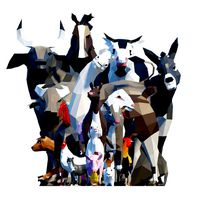
farm animals pack low-poly
...universal formats<br>total of 125 different objects.<br>20 different animals<br>15 adult animals<br>horse<br>bull<br>buffalo<br>cow<br>donkey<br>llamalt;br>goat<br>sheep<br>pig<br>shepherd dog<br>turkey<br>rooster<br>hen<br>bunny<br>cat<br>5...
3d_export
$28

jam pedals delay llama
...for high-quality render results. no extra plugins are required for this model. lights and cameras are not included in the scenes.
turbosquid
$1

llama 3d
...d
turbosquid
royalty free 3d model llama 3d for download as on turbosquid: 3d models for games, architecture, videos. (1191373)
Skull
3d_export
$40
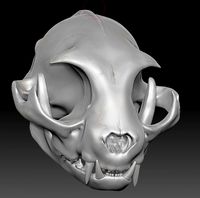
Cat Skull ZBrush Sculpture 3D Model
...ure 3d model
3dexport
cat feline skull bones kitty cranium pet
cat skull zbrush sculpture 3d model saschasnowstorm 73801 3dexport
3d_ocean
$5

ELEGANT SCULL 3D MODEL
...human jaw lines male medical pirate scientific skeletal skeleton skull teeth zombie elegant scull 3d model .obj and .3ds...
3d_ocean
$29

Cartoon Skeleton Rigged
...cartoon chararcter funny halloween horror mentalray monster rigged skeleton skull toon low poly of a cartoon skeleton made with...
3d_ocean
$9

Skull_Cave_2
...lygon. ..13464 vertices. 4096 * 4096 texture. 5 uw map texture. ao,spec,nor,gl,diff. texture map. obj,fbx,and blend format model.
3d_export
$30

Patterned skull 3D Model
...odel
3dexport
patterned skull
patterned skull 3d model download .c4d .max .obj .fbx .ma .lwo .3ds .3dm .stl kex74 104360 3dexport
3d_export
$25
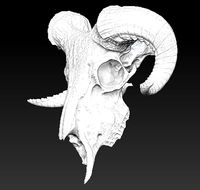
Ram skull 3D Model
...bone head 3dprinter printable
ram skull 3d model download .c4d .max .obj .fbx .ma .lwo .3ds .3dm .stl luckyhunter 113590 3dexport
3d_export
$20

Human Head Skull with Ancient Tribal Tattoo 3D Model
...man head skull with ancient tribal tattoo 3d model download .c4d .max .obj .fbx .ma .lwo .3ds .3dm .stl sanchiesp 105978 3dexport
cg_studio
$45

Human skeleton3d model
...cgstudio human skeletal system human skeleton bones bone spine skull femur teeth skeleton system .obj .mb .max .ma .fbx...
cg_studio
$49

Robot 183d model
...model cgstudio characters robot transformer droid scifi sci fi skull humanoid bot robotic textures materials .max .obj - robot...
3ddd
$1

CB2 Metalhead skull set
...ор ваз и декора от cb2
tessa vase
studded bud vase
metalhead skull
3-piece hat trick vase set
gatz vase
halo taper candle holders
